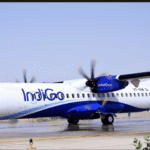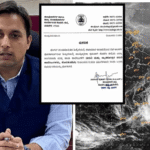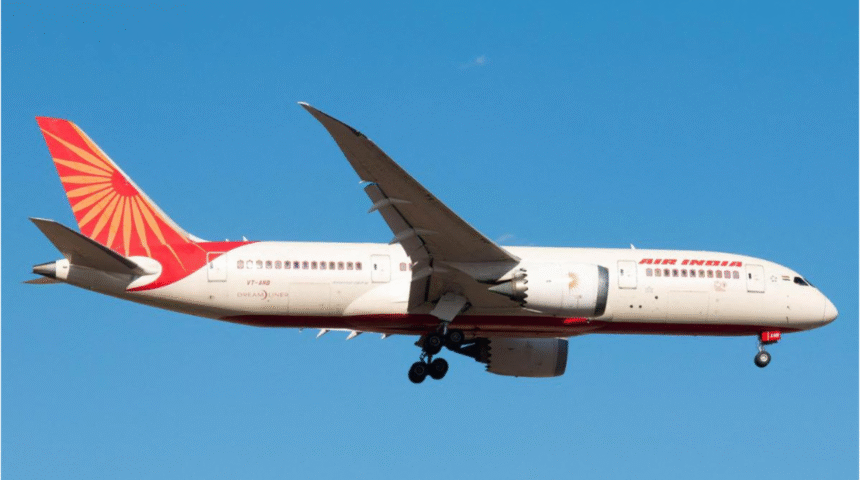1. Introduction
Flight Duty Extension for Air India Ltd In a development that has stirred both operational relief and safety concerns in India’s civil aviation sphere, the Directorate General of Civil Aviation (DGCA) has granted a temporary extension of flight duty time limits for select flights operated by Air India’s Boeing 787 Dreamliner fleet. The regulator has clarified, in a letter to the Airline Pilots’ Association of India (ALPA India), that the Flight Duty Time Limitation (FDTL) for two-pilot operations on the Boeing 787 is increased to 10.30 hours from the standard 10 hours, and the corresponding Flight Duty Period (FDP) increased to 14.00 hours from the usual 13.00 hours.
The DGCA emphasised that this extension is not a blanket waiver but is confined to a limited number of flights affected by specific operational reasons—principally due to longer routing caused by the closure of Pakistani airspace and potential wind-pattern headwinds during winter.
This decision has ignited a debate: on one hand, airlines face real operational disruptions; on the other, pilot associations warn of fatigue risks and ask whether safety is sufficiently served by such go-around exemptions. In this article, we unpack the regulatory change, its rationale, its limits, the responses from industry stakeholders, and the broader implications for safety, Flight Duty Extension for Air India Ltd pilot welfare and airline operations.  FORE MORE INFORMATION
FORE MORE INFORMATION
2. Background: Flight Duty Time Regulation in India
2.1 What are FDTL and FDP?
-
The Flight Duty Time Limitation (FDTL) refers to the maximum flying time a pilot (or cockpit crew) may operate under a specific duty configuration.
-
The Flight Duty Period (FDP) is the total period from the time a pilot reports for duty and ends once the aircraft comes to rest at the termination of duty, including post-flight tasks.
These limits are established under the Civil Aviation Requirements (CAR) Section 7, Series J, Part III, issued by DGCA as part of fatigue risk management.
2.2 Why such limits exist
The limits are grounded in fatigue science: long duty times, disrupted circadian rhythms, inadequate rest and high workload contribute to pilot fatigue, which in turn raises risk in flight operations. Research and ICAO (International Civil Aviation Organisation) guidance underscore this link.
2.3 India’s regulatory history
In India, the DGCA’s CAR lays down detailed tables of maximum flight time, duty periods, Flight Duty Extension for Air India Ltd rest requirements, acclimatisation rules, etc. The standard in many scheduled two-crew operations has been a 10 hour limit on flying time in a single sector for such configurations (or however the operator’s scheme is approved) with a 13 hour maximum FDP under the approved scheme. Any extension traditionally required operator-specific approval and safety justification.
3. What Has Changed: The DGCA’s Extension for Air India’s 787s
3.1 The exemption details
According to the DGCA’s communication to ALPA India:
-
For two-pilot operations on the Boeing 787 Dreamliner fleet, a temporary increase of FDTL from 10 hours to 10.30 hours has been granted.
-
The corresponding FDP has been extended from 13.00 hours to 14.00 hours.
-
The extension is restricted to certain flights impacted by longer routing due to Pakistan’s closure of airspace and likely increased flight time in winter due to stronger headwinds.
-
The exemption is not for planning purposes in general—meaning schedule designers cannot routinely plan flights based on the extended limit; it is only to accommodate any unanticipated increase in flying time/duty period resulting after departure.
-
One-hour extra rest is to be provided to crew on those flights where the extension is used.
-
The operator must submit monthly fatigue reports for the flights under this exemption.
The DGCA’s reasoning, as communicated:
-
Specific routes of Air India’s 787 operations (primarily from North India and one from Amritsar to western/European destinations) are affected by Pakistan’s airspace closure; detours and added flying time of up to ~30 minutes in the winter schedule were anticipated.
-
The extension is to prevent passenger inconvenience, flight disruptions and downstream roster irregularities on the impacted sectors.
-
The regulator asserts this exemption is for only eight or nine flights operated with the 787 under these conditions, not for all Dreamliner operations.
3.3 Operator involved
The exemption applies to Air India’s Boeing 787 operations—the only Indian carrier operating this type in two-crew mode on those sectors. It therefore concerns the carrier’s long/medium-haul schedule impacted by airspace closure and adverse winds.
4. Stakeholder Reactions: Support, Concerns and Contestation
4.1 Air India’s position
Air India has not publicly commented in detail on the exemption decision beyond acknowledging adherence to regulatory requirements. The carrier faces cost pressures from rerouting due to airspace restrictions and is balancing crew rostering with operational viability.
4.2 Pilots’ associations’ objections
Major pilot bodies have voiced concerns:
-
The Airline Pilots’ Association of India (ALPA India) said the extension creates a “scenario ripe for fatigue-induced errors”.
-
The Federation of Indian Pilots (FIP) wrote to the PMO and civil aviation ministry, Flight Duty Extension for Air India Ltd threatening legal action unless the DGCA withdraws the extension. They claim the decision contravenes earlier undertakings and the CAR on FDTL and undermines pilot fatigue-management science.
-
Specific concerns: Pilots’ bodies point to a recently issued FAA (U.S.) Airworthiness Directive (AD) concerning Boeing 787 captain’s seat recline, Flight Duty Extension for Air India Ltd which adversely affects in-flight rest quality; against this backdrop, they argue extending duty time is counter-intuitive.
4.3 Safety-regulator commentary
The DGCA has defended the decision as an operational necessity. It emphasises the narrow scope (only 8-9 flights), full regulatory oversight (monthly fatigue reporting), Flight Duty Extension for Air India Ltd extra rest mandated, and that this is a temporary accommodation for “specific operational reasons”. The regulator also clarified there is no blanket extension across all 787 operations.
5. Why the Extension Matters: Operational Context and Constraints
5.1 Pakistan airspace closure & route impacts
Since April 2025, Pakistan closed parts of its airspace to Indian carriers—forcing rerouting of west-bound flights, adding flight time, fuel costs and affecting crew duty limits. As one Reuters report noted, Flight Duty Extension for Air India Ltd Air India faced up to US $600 million annual additional cost from detours
For flights from Delhi, Amritsar or other northern cities to European destinations, Flight Duty Extension for Air India Ltd this can mean extra flying time, later arrivals, changed crew rest cycles, Flight Duty Extension for Air India Ltd and tighter turnaround schedules.
5.2 Winter wind patterns & headwinds
In winter months, strong headwinds over Europe/Iran/Arabian Sea may further lengthen flights, pushing beyond standard duty planning margins.
5.3 Two-pilot configuration on 787
On the Boeing 787 Dreamliner, many long-haul airlines use augmented crew (three or more pilots) on ultra-long sectors for fatigue mitigation. But some operations by Air India might be configured with two-pilot pairs on those sectors under approved scheme. When flying time increases slightly, question arises whether duty period may exceed the comfortable safety envelope. The DGCA’s extension is to accommodate such incremental increases.
5.4 Airline rostering, economics and viability
From the airline’s standpoint, rigid duty time caps with increased flying times mean more crew, longer layovers, increased costs. The marginal extension allows avoidance of changes to crew composition/roster structure for a small number of flights, Flight Duty Extension for Air India Ltd thereby stabilising scheduling and controlling cost disruption.
6. The Safety and Fatigue Debate
6.1 Fatigue risk concerns
Fatigue in aviation is well-documented: extended duty hours, circadian disruption, long sectors, poor rest, and high workload all raise the risk of error.
Pilots’ bodies argue that increasing duty limits—even by 30 minutes flying time and one hour FDP—erodes the margin of safety, especially when rest conditions are compromised (e.g., captain’s seat recline limitations).
6.2 Mitigation aspects in the DGCA exemption
The DGCA’s framework includes some mitigation:
-
Additional 1 hour of rest mandated when extension is applied.
-
Monthly fatigue reporting by the operator for the impacted flights.
-
Limiting the extension to specific flights/routes and not permitting planning on the basis of the higher limit.
6.3 Experts’ and stakeholders’ view
While some operational experts view the narrow exemption as pragmatic given real constraints, many safety advocates say any extension—even temporary—should follow a full fatigue risk management system (FRMS) analysis with crew input and transparent data. They argue that while operational reasons exist,Flight Duty Extension for Air India Ltd safety cannot be compromised.
7. The Limits and Conditions of the Extension
7.1 Restricted application
-
The extension is not a broad waiver; it applies only to a limited number of Boeing 787 flights (about eight or nine) as per DGCA communication.
-
It is not for planning purposes (i.e., schedule designers cannot build routinely on the extended limit).
-
It is specifically for two-pilot Dreamliner operations impacted by route changes due to airspace closure and winter wind conditions.
7.2 Non-transferability
-
The exemption is not applicable across all aircraft or crew configurations; only those flights where DGCA has authorised it.
-
For other routes/aircraft, standard FDTL/FDP limits and CAR rules continue fully.
7.3 Monitoring & oversight
-
Monthly fatigue reporting required from operator.
-
DGCA retains right to audit and enforce; Flight Duty Extension for Air India Ltd earlier DGCA actions have shown willingness to penalise duty time violations.
8. Implications for Airlines, Crew and Policy
8.1 For airline operations
Air India benefits from smoother rostering, fewer crew changes or augmentations, better schedule integrity on impacted sectors, and slightly more flexibility in adverse operational conditions. However, Flight Duty Extension for Air India Ltd the airline must manage the additional rest time and comply with reporting/monitoring obligations.
8.2 For pilots and crew
Pilots face the tension between operational necessity and fatigue risk:
-
On the one side, the extension addresses late arrival/workload on certain flights.
-
On the other side, increased duty time may reduce margin for rest and recovery, Flight Duty Extension for Air India Ltd especially if cumulative duty goes up across multiple days.
-
Crew scheduling needs to ensure that the extended flights do not cascade into fatigue across subsequent duties.
8.3 For regulatory policy
-
The DGCA’s move signals regulatory flexibility in the face of significant operational disruptions (airspace closure, winter routing).
-
But it also triggers debate on regulatory consistency, transparency and alignment with international fatigue management standards.
-
There may be increased pressure on DGCA to formalise and perhaps expand FDTL/FDP review across Indian aviation post-this event. Indeed, DGCA itself announced full implementation of revised pilot duty time rules by November 1, 2025.
9. Contextual Risks and Considerations
9.1 Fatigue accumulation & human performance
Extending duty time may not pose immediate risk for a single flight, but fatigue is cumulative. If roster design allows multiple extended duties in a period with inadequate rest, Flight Duty Extension for Air India Ltd risk multiplies. Aviation fatigue science warns of degraded performance, slower reaction time, attention lapses.
9.2 Post-crash sensitivity
The decision comes in a heightened safety environment: with the recent crash of Air India Flight 171 (Boeing 787-8) on June 12 2025, which killed nearly all aboard, aviation safety scrutiny is intense. Although this duty extension is not directly connected to that crash, Flight Duty Extension for Air India Ltdit occurs in a context where regulatory credibility and pilot confidence are especially sensitive.
9.3 Global comparisons
Many international regulators adopt conservative limits for two-pilot operations on long sectors; often augmented crews (three or more pilots) are required for flights of 9+ hours. The decision to extend in India might invite comparisons and scrutiny around whether pilot workload standards are maintained in line with best practice.
9.4 Commercial pressures vs. safety culture
Some pilot associations criticise the extension as giving primacy to operator convenience (cost/roster optimisation) over safety margin. They argue regulatory deviations should be rare, Flight Duty Extension for Air India Ltd transparent and evidence-based with full crew involvement.
10. What Should Be the Way Forward?
10.1 Transparent data-driven oversight
DGCA and operators should publish (or at least share with crew associations) data on the effects of the extension: duty hours, rest hours, Flight Duty Extension for Air India Ltd fatigue reports, Flight Duty Extension for Air India Ltd incident/irregularity trends.
10.2 Crew input and fatigue risk management
Any extension should be under a formal Fatigue Risk Management System (FRMS) with crew representation, tailored risk mitigation (e.g., additional rest, augmented crew if conditions worsen), Flight Duty Extension for Air India Ltd and monitoring of cumulative duty exposure.  FORE MORE INFORMATION
FORE MORE INFORMATION
10.3 Schedule design safeguards
Operators must ensure that no pilot is rostered into repeated extended duty periods without commensurate rest or workload mitigation. Roster designers must factor in worst-case delays, Flight Duty Extension for Air India Ltd headwind variations, technical stops.
10.4 Review of standard limits and configuration
Given operational realities (airspace closures, detours, long sectors),Flight Duty Extension for Air India Ltd regulators and industry may need to revisit standard duty-time limits for long-haul two-pilot configurations, or mandate augmented crews for certain routes, matching international norms.
10.5 Safety communication and culture
Regulators must clearly communicate that operational flexibility does not mean relaxation of safety standards. Pilot associations, Flight Duty Extension for Air India Ltd airlines and DGCA should engage collaboratively to reassure crew that fatigue management remains paramount.
11. Conclusion
The DGCA’s decision to permit a limited extension of flight duty limits for Air India’s Boeing 787 two-pilot operations reflects a real-world operational challenge: route detours, airspace closure and winter headwinds that push flying/duty time beyond standard planning limits. On the face of it, the extension is narrow in scope, structured with additional rest, reporting and oversight.
However, Flight Duty Extension for Air India Ltd the move also highlights a delicate balancing act between operational imperatives and the imperative of safety. Pilots, associations and regulators all recognise that duty-time limits are not mere numbers—they represent fatigue-mitigation thresholds rooted in human performance science. Even a 30-minute extension can be significant if it erodes margin and becomes routine.
For Indian aviation, Flight Duty Extension for Air India Ltd this episode may mark a turning point: will the industry respond with strengthened fatigue management, transparent data and crew-centric scheduling, or will the exception become a precedent for further extensions? The answer will matter not only for Air India and its pilots, Flight Duty Extension for Air India Ltd but for the broader trust in India’s aviation safety culture.
In the final analysis: the extension is understandable, but must remain exceptional, transparently monitored, and never at the expense of pilot wellbeing and passenger safety. ALSO READ:-Behind Closed Doors: Odisha School Closures Fuel Dropouts and Educational Challenges for Tribal Children 2025





